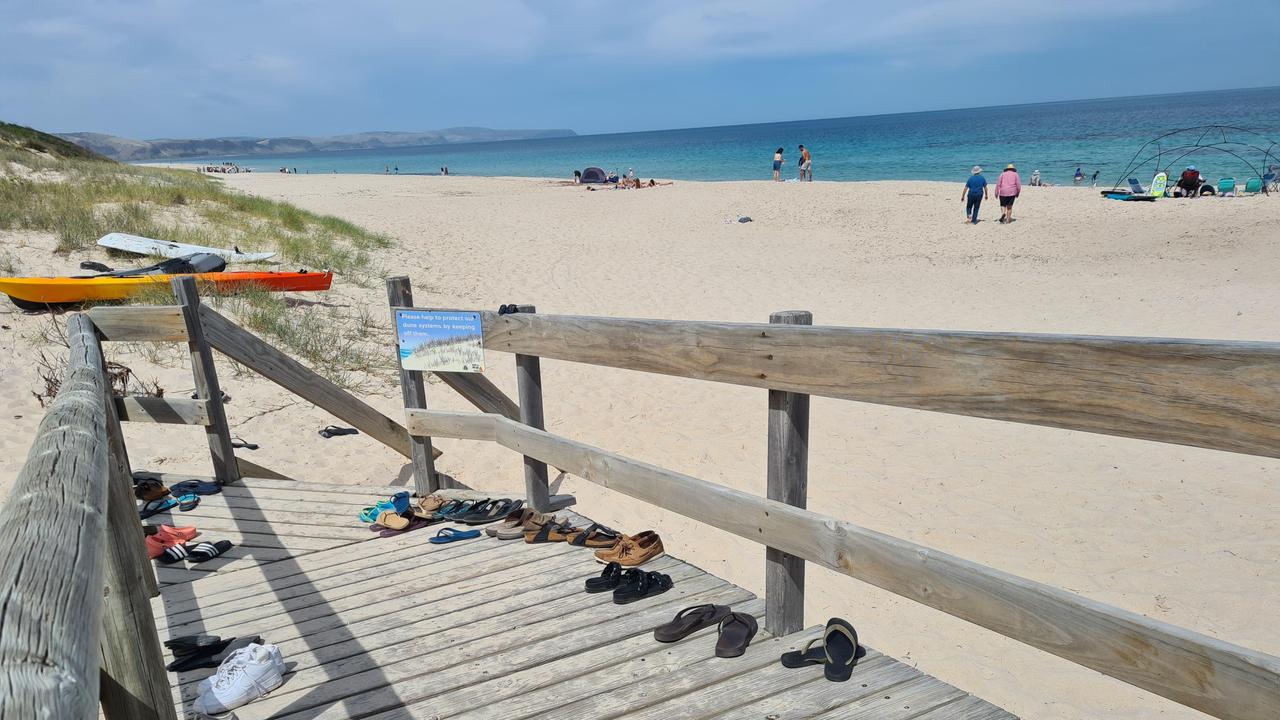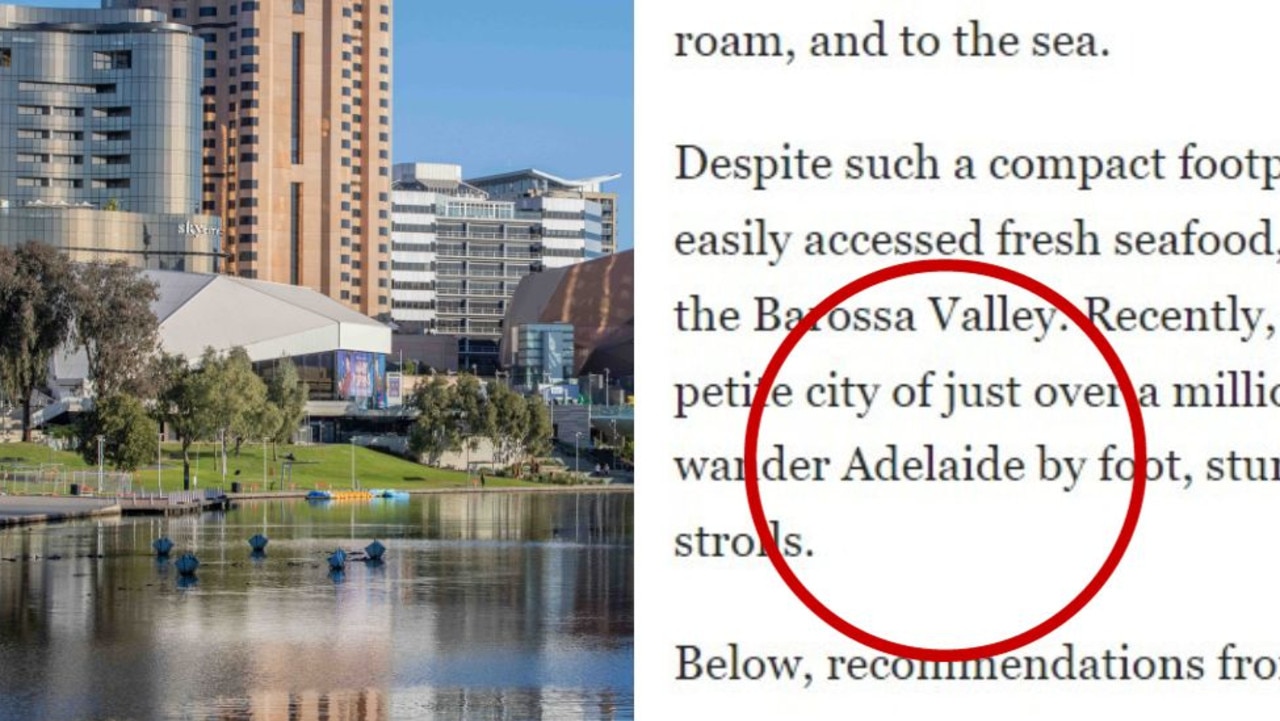Travel journalist Bruce Elder reveals in his book 1014 Places to See In Australia some of SA’s most unusual tourism spots
WACKY, whimsical and wild, we’re a state brimming with places to discover. Here are 14 of SA’s little-known tourism destinations — how many have you been to?

SOUTH Australia has long prided – and promoted itself – as having top notch wine regions, a fair smattering of churches and the jewel in the crown, Kangaroo Island.
But a new book, 1014 Places to See In Australia puts paid to the suggestion that’s all our state has to offer.
Penned by travel journalist and Australasian editor of the Australian Travel Pursuit, Bruce Elder, the author has spent 20 years exploring every nook and cranny of the country to compile the definitive list which he divides into sections on nature, the ocean, our history and people.
While South Australia boasts upward of 100 mentions in the weighty tome – including tourism stalwarts Mt Lofty, the Nullarbor, the Blue Lake, Hahndorf and Kangaroo Island’s Cape Borda Lighthouse – controversially we have been excluded under the “great beaches” chapter.
Of nine sandy stretches of beach rated as the greatest in the nation, six are West Australian and two Queensland locales and Sydney’s Bondi Beach round out the list.
However, we can certainly lay claim to some of the more unusual entries in the tally of 1014 places.
Here, we bring you 14 South Australian spots you might have never known existed.
From the wacky and whimsical to the hidden gems, we’re a great state brimming with places to discover, and in some cases, half the fun is getting there.
MORE: 25 of SA’s most unusual places
OUR ALTERNATIVE BOTANIC GARDEN
Australian Arid Lands Botanic Garden – Port Augusta
What it lacks in greenery this 250 hectare expanse makes up for in pops of colour and quirky foliage and aims to demonstrate our arid lands are anything but lifeless when it comes to flora. Established in 1993 to research, conserve and promote arid pant communities, this oasis on the edge of the desert also boasts breathtaking views across the Flinders Ranges.
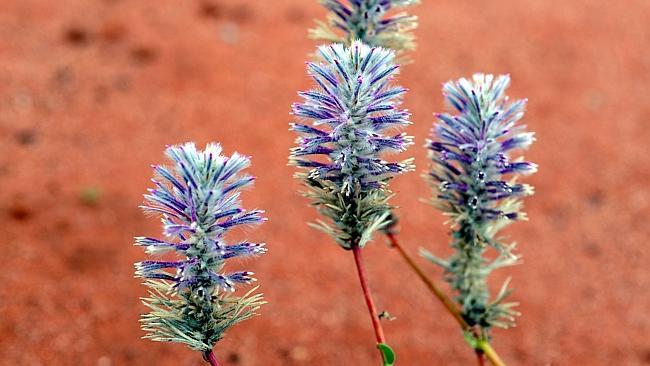
OUR LIVING GHOST TOWN
Beltana town – Beltana
Trek 540km north and you will discover Beltana, a once-thriving copper mining town which by 1984 had a population of nine. With no operating shops or public establishments to speak of – after the police station, hospital, school and railway shutdown in the 1960s – the town appears near-deserted and visitors can walk freely among the abandoned buildings but for a smattering of private residences complete with “keep out” signs.
OUR LOCHNESS MONSTER
Tantanoola Tiger – Millicent
A well-known legend in the south east, the Tantanoola Tiger story began in the 1880s when a Bengal tiger allegedly escaped from a travelling circus and sheep in the area began to go missing. After eleven years and countless sightings of a tiger-like creature, a local man came across what he thought was the errant animal with a sheep in his jaws. He shot the four-legged fiend in its side, only to discover it wasn’t a tiger but a Assyrian wolf – an equally foreign creature to the area – which was eventually stuffed and put on display at the local pub. It’s believed the wolf was a stowaway on a boat shipwrecked off the coast and managed to make it to shore, but some other theories also abound.
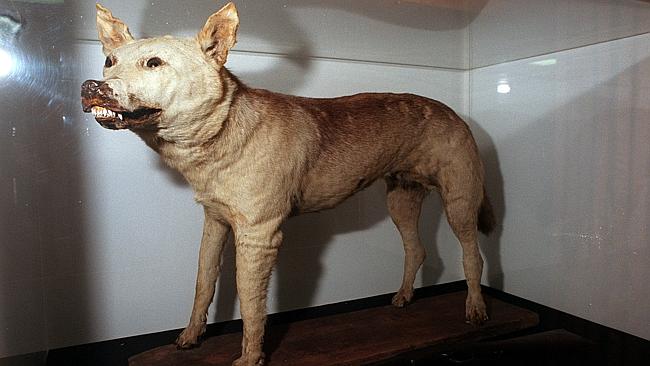
OUR SHANTY TOWN
Shack City – Blanchetown
When you’ve got the mighty Murray River on your doorstep who needs luxurious digs? According to Elder that was the premise behind this Riverland town’s population of shacks fashioned from “anything which came to hand – bits of corrugated iron, fibro and scraps of building materials”. It’s even spawned a Blanchetown Shack Owner’s Association to protect the interests of the community.
OUR WHISPERING WALL
Barossa Reservoir Whispering Wall – Williamstown
It was built for a functional purpose – namely for water catchment and supply – but these days is an acoustically acclaimed engineering marvel where even a whisper at one end can be heard 140 metres away, earning it the unusual moniker. Constructed between 1889 and 1902, at the time it was the highest reservoir in Australia at 36m, but according to Elder can lay claim to being “one of those strange effects produced by a delightful accident”.

OUR QUIRKY HISTORY
The Herbig Tree – Springton
Not so much a hidden gem as a unique slice of our history, the Herbig Tree is a Barossa attraction that has nothing to do with wine. When European settler and tailor-turned-farmer Friedrich Herbig arrived in Australia in 1855, he was so poor he decided to live in a hollow red gum tree that’s believed to have been between 300 to 500 years old. Not long after he married a local Lyndoch girl and two of their 16 children were born in the unusual dwelling. As their family grew, Herbig built a pine hut nearby and, eventually, a stone cottage.
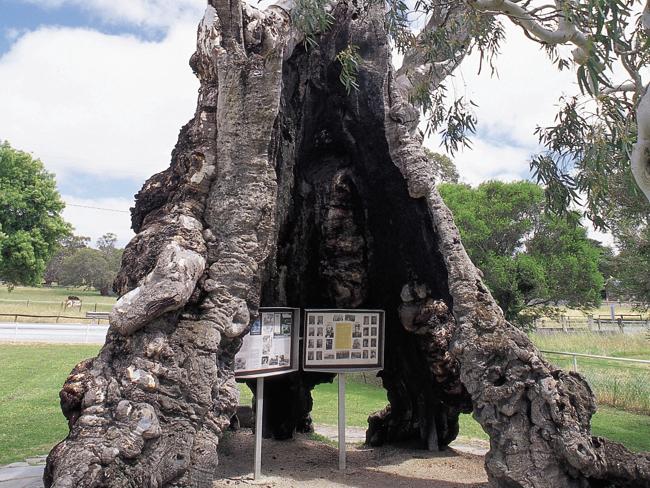
OUR DEAD SEA
Pool of Siloam – Beachport
While it might not draw thousands of pilgrims to its salty shores, this lake – which is said to possess seven times the salinity of the sea – is a popular therapeutic spot. Fed by underground springs and made buoyant by the salt content, Elder said “you can even lie on your back and read a book” while taking a dip.
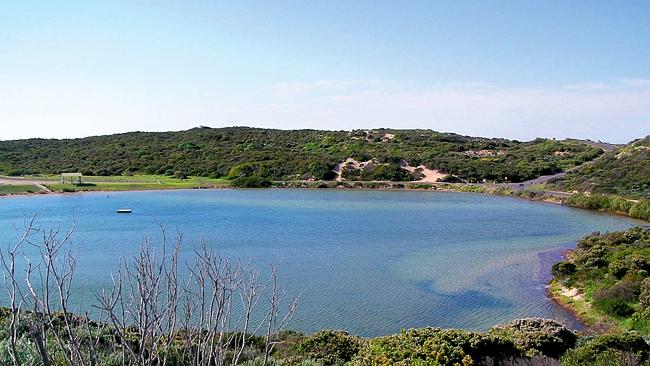
OUR LITERARY GEM
Dingley Dell – Port Macdonnell
While the Coorong with its place in Storm Boy is arguably our state’s most famous literary landmark, poetry fans may well be aware of Dingley Dell cottage, the former home of Adam Lindsay Gordon. To this day, the house remains as a memorial museum to the romantic poet who is said to have spent some of his most fruitful years at Dingley Dell, penning the bulk of the poems in Sea Spray and Smoke Drift and Bush Ballads.
OUR HISTORY-RICH PUB
Magpie and Stump Hotel – Mintaro
There’s plenty of pubs in our great nation – and state – steeped in history but as far as Elder is concerned this is an “extraordinary pub”. Part of the 163-year-old establishment’s appeal lies in the original fittings including a rear wall where you can “still see huge rings where the bullocks were tied up at night, presumably so the drovers had only a short walk to the pubs that existed on either side of the stable,” Elder said.

OUR HISTORY BUFF’S DREAM
Yallum Park – Penola
Gracious and grand, this is a Penola landmark to rival the Mary MacKillop connection. Touted as the best-preserved Victorian house in Australia which has still retained its original condition, the sandstone mansion boasts William Morris wallpapers, Italian marble mantelpieces, gold leaf touches, stained glass windows and antique furniture and decorations.
OUR FAMOUS SECRET TREE
Cazneaux Tree – Wilpena Pound, SA
The sight of it may be familiar but scores of people the world over are likely unaware this tree lives right here in South Australia. Its rise to worldwide acclaim came when Harold Cazneaux photographed the humble tree in 1937 and christened the image “The Spirit of Endurance”. From that point on, the image has been reproduced on calendars and posters the world over, according to Elder.
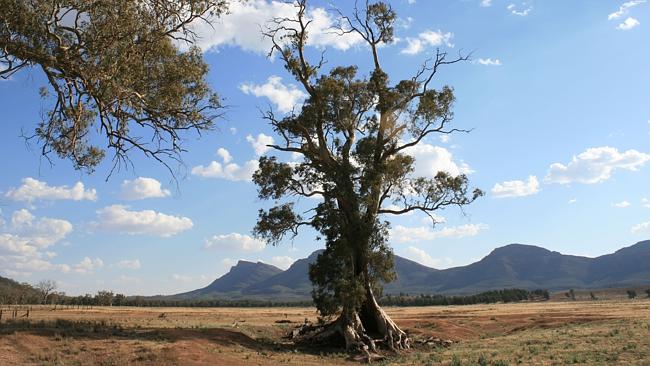
OUR UNUSUAL TIMEPIECE
Sundial of Human Involvement and Scupltures – Kingston South East
It’s a mouthful of a name but is much prettier to look at than say. Created by South Australian artist Silvio Apponyi, the sundial features a series of granite sculptures including an elephant seal and cub, a blue tongue lizard and a Japanese crab. Elder said the unusual attraction made the list of 1014 places as locals were encouraged to be involved in the sundial construction. “Each day people would bring fish, crabs, frogs, lizards, seaweed, shells and even dead birds to Silvio and suggest that he sculpt them,” he said.
OUR BEST COMMUNITY SWIMMING POOL
Millicent Swimming Pool – Millicent, SA
Alongside a list of lakes and national park swimming reserves in 1014 Places to See in Australia sits Millicent Swimming Pool – as Elder has coined it – which in reality is a swimming lake bearing a more-than-passing resemblance to a traditional community pool. Surrounded by grassy lawns and trees it’s a popular spot for local families and visitors to cool down during the warmer months.
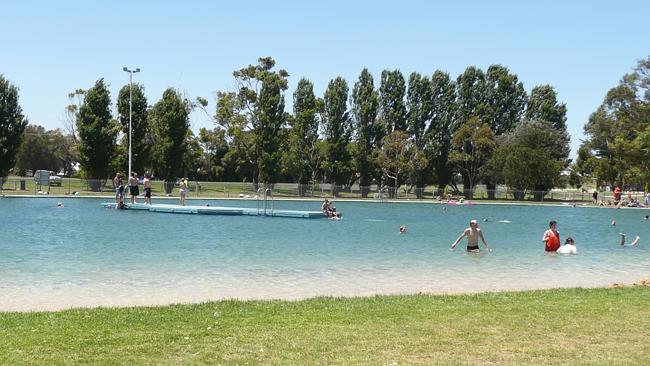
OUR NATURAL WONDER
Murphy’s Haystacks – Streaky Bay
Forty kilometres south east of Streaky Bay, these structures are much mightier than hay and are in fact made of pink granite. Geologists believe the rocks were weathered into their present form some 100,000 years ago and legend has it their name comes from an Irish mail coach driver who from his distance on the road used to point out the formation to passengers and exclaim that it looked like a big stockpile of hay.
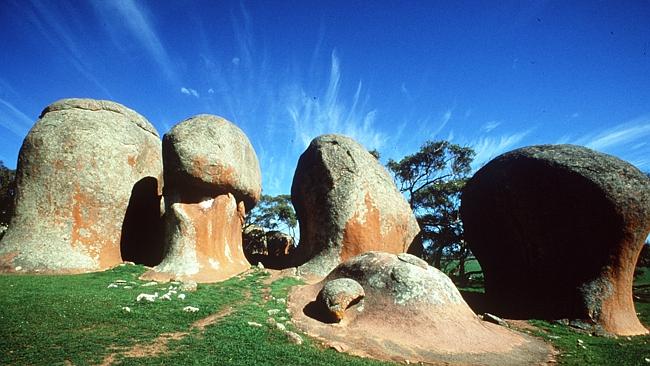
TELL US: Are there any unusual SA tourism spots which are missing from this list? Tell us the hidden gems you’ve found in our state below.


